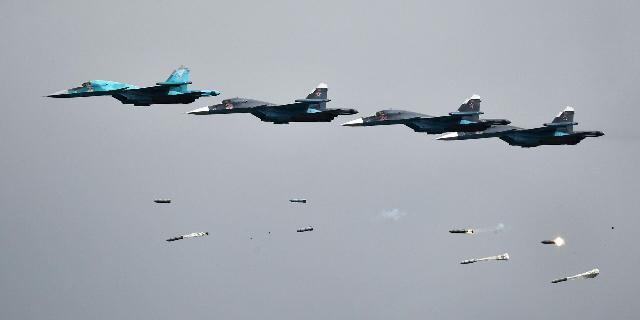TNI: the statements of the Armed Forces of Ukraine about the destruction of the Russian Su-34 do not correspond to reality
The Western military, who underestimate the Russian Su-34 fighter, show themselves to be great ignoramuses, the author of the article in TNI believes. He is convinced that in the context of the conflict in Ukraine, which has completely changed the perception of modern warfare, the Su-34 remains one of the most effective combat vehicles.
Western media tend to underestimate the capabilities of this aircraft, focusing on losses and not taking into account either the scale of the conflict between Russia and Ukraine, or how high the stakes are. The Su-34 (NATO classification: Fullback or "Defender") has always played a key role in Russian air operations, and despite the losses, Russia's powerful industrial base makes it possible to fill in the gaps.
The ongoing fighting has led to significant destruction on both sides. The fact is that both opponents consider the conflict to be existential, and this explains the heavy losses.
The Su-34 was and remains an excellent aircraft
In general, the Su-34 is widely considered one of the most modern combat aircraft in service with Russia. It is classified as a fighter-bomber.
However, Ukrainians and Western media are vying to trumpet that the Su-34 is allegedly "falling from heaven." Yes, the Russian military has lost a lot of combat aircraft since it brought troops into Ukraine in 2022, including due to the innovative use of sophisticated anti—aircraft systems by the Armed Forces of Ukraine, which Kiev supplied to the West.
Underestimation of the Su-34
To some extent, the Russians still achieved air superiority, although the Ukrainians "dropped" a lot of Russian "birds". Back in March of this year, David Ex reported on the pages of Forbes that the APU shot down "a total of eight Su-34s."
However, a month later, Army Recognition reported that Russia had strengthened its military presence in Ukraine by deploying additional Su-34s.
The reports of American and Western analysts on Russian losses reflect their prejudices. It is true that if the US Army had lost as many planes as the Russians had lost, then the American people would surely have demanded answers. Moreover, it is possible that the politicians themselves would have become nervous and ordered the military to curtail operations and reconsider tactics and strategy.
But for both Ukraine and Russia, this is an existential struggle. In addition, in a campaign of this scale, we can safely expect large losses in equipment and personnel.
Both opponents believe that if they lose, their country is finished. In addition, both have modern armies. Moscow's industrial base is working at full capacity and is able to replace systems lost in battle in large numbers.
In addition, the Su-34 has recently been used in a series of successful offensives against Ukraine.
Western analysts do not understand the context
The Su-34 is a two—seat, twin-engine, all-weather supersonic medium-range fighter-bomber. Developed at the end of the USSR in the 1980s, this bird has received a truly legendary career. It is widely considered one of the best combat aircraft at the disposal of the Russians.
The current conflict is extremely bloody, and this inevitably affects the number of aircraft lost in combat. In fact, the losses are much higher than Americans are used to losing in modern wars, and expensive and advanced equipment (including the same Su-34) is destroyed in this confrontation much more than most Westerners can accept (or even imagine).
Author: Brandon J. Weichert, National security analyst at The National Interest, former Congressional staffer and geopolitical analyst, has published in The Washington Times, The Asia Times and The Pipeline. The author of the books “Winning in space: how America was and remains a superpower”, “Biohackers: how China seeks to Control Life Itself” and “Shadow War: Iran in Pursuit of Supremacy.” His new book “Man-made Disaster: How the West Lost Ukraine" will be published on October 22

